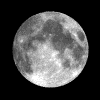Department of Physics and Astronomy: Publications and Other Research

Edward Schmidt Publications
Document Type
Article
Date of this Version
7-2019
Citation
The Astrophysical Journal Letters, 880:L7 (8pp), 2019 July 20
https://doi.org/10.3847/2041-8213/ab2e77
Abstract
The seemingly normal F dwarf, KIC 8462852 (a.k.a. Boyajian’s Star), has been observed to exhibit two types of behavior unique among known variable stars: infrequent episodes of small brightness dips and a long-term decline in brightness between the dips. No satisfactory mechanism has been found for this behavior, at least in part, because there is only one known example. To begin to rectify this, we have searched for other stars exhibiting similar dipping behavior using the Northern Sky Variability Survey and have used data from the All Sky Automated Survey for Supernovae to further investigate the behavior. Twenty-one stars are identified as possible dippers. Fifteen may be similar to Boyajian’s star and the other six are likely to be more extreme examples of the same phenomenon. Using data from the Gaia Second Data Release we show that the dipper candidates are located in two restricted regions of the H-R diagram, near the main sequence with masses near 1 solar mass and in the red giant region near the evolutionary track for 2 solar mass stars. Stars in the former group are considered to be likely analogs to Boyajian’s star and should be studied in more detail to gain insights into the dipping phenomenon.


Comments
© 2019. The American Astronomical Society. Used by permission.